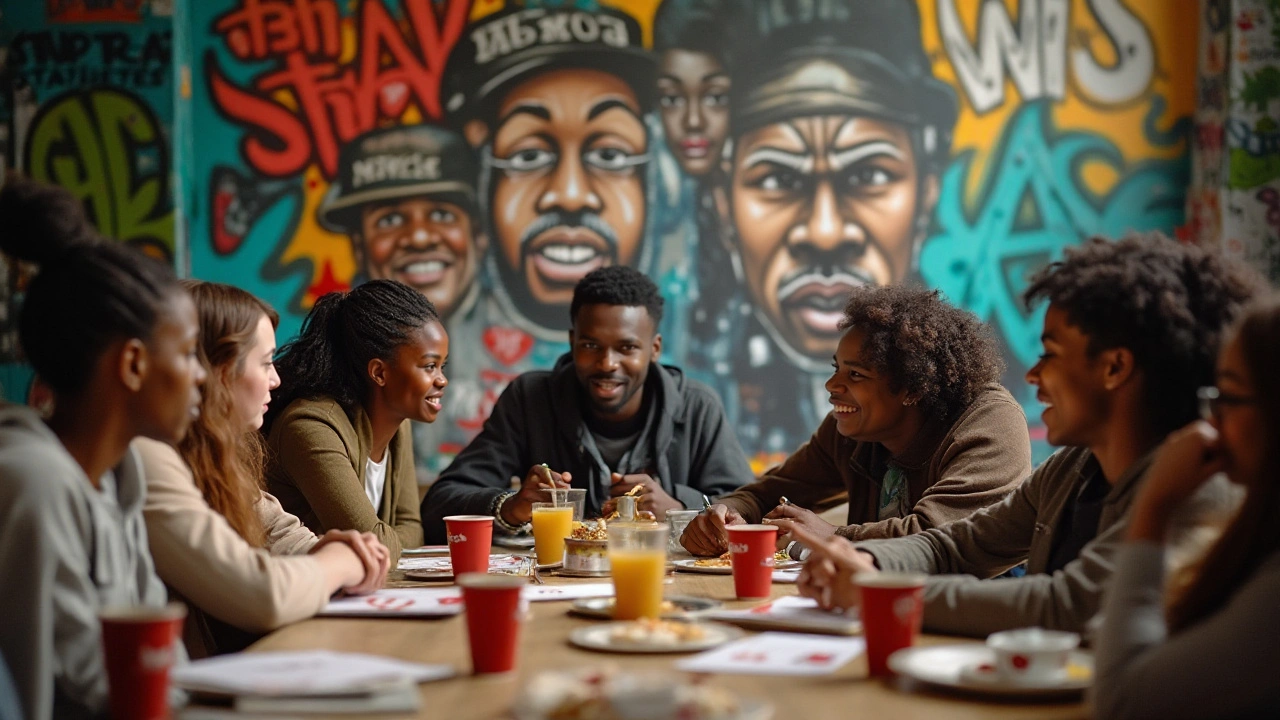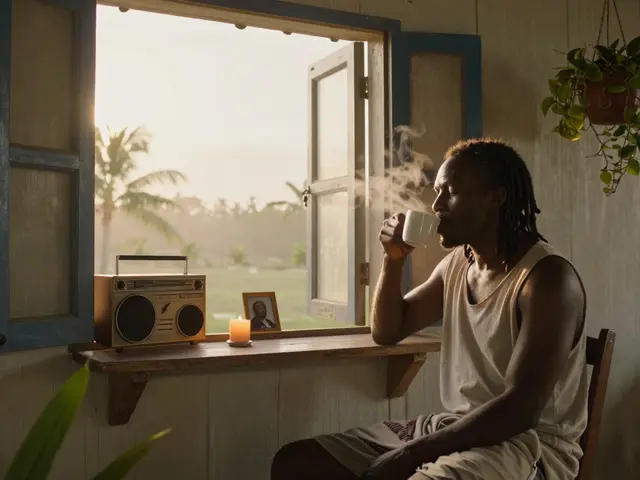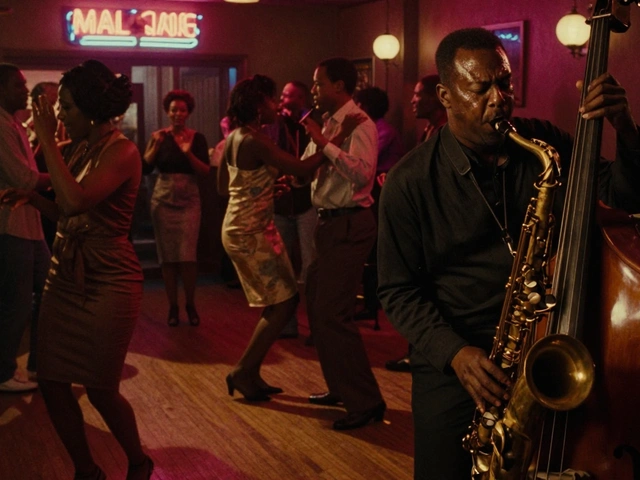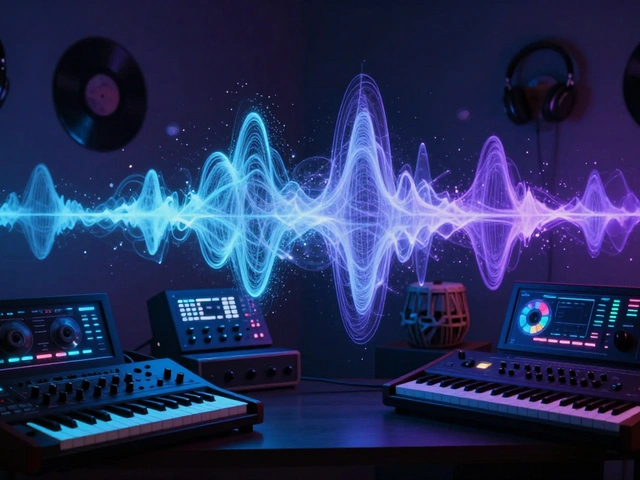Hip hop is more than a beat; it's the pulse of a movement that began in the streets, pressing against the boundaries of music and culture. Its roots dig deep into the experiences of those who felt voiceless, bringing to light the trials, triumphs, and untold stories of everyday life.
With each verse, these artists craft a narrative that resonates with listeners, sparking change and inspiring generations. The journey of hip hop from its modest beginnings to its significant societal influence is a tale worth exploring.
In this read, we will embark on a journey through time, tracing the origins of hip hop, understanding its transformation over the decades, and examining its ongoing impact. Whether it's tales of struggle or celebrations of success, hip hop continues to serve as a crucial expressive outlet for many.
- The Origins of Hip Hop
- Evolution Over the Decades
- Impact on Society and Culture
- Iconic Hip Hop Voices and Stories
- Future Trends in Hip Hop
The Origins of Hip Hop
Once upon a time in the bustling boroughs of New York City, a dynamic cultural brew was stirring. It was the early 1970s, a time when young, creative minds were searching for an outlet for their restless energy. In the South Bronx, a place marked by urban decay and bleak economic prospects, something extraordinary was about to happen. This vibrant locale became the cradle of a new musical genre that would soon echo around the globe—hip hop. The sounds of funk and soul blended seamlessly with street poetry, as DJs and emcees took the reins of neighborhood block parties. This was not merely a new sound; it was the anthem of a generation yearning to make its voice heard.
Kool Herc, widely acknowledged as the forefather of hip hop, set the stage for this revolution with his innovative technique of isolating breakbeats. In August 1973, Herc's legendary block party at 1520 Sedgwick Avenue introduced the foundational elements of the genre, fostering a raw and energetic form of expression. As Herc spun records, his rhythmic storytelling and pulsating beats sparked a cultural shift that drew local youth toward its magnetic pull. The foundations of hip hop were laid with simple tools—a couple of turntables and a microphone, becoming emblematic of its inclusive, grassroots nature.
During this early era, hip hop was not just about the music; it was a holistic experience encompassing vibrant graffiti art, intricate breakdancing moves, and a distinctive fashion sense. As the beats played on, a whole new lifestyle was birthed. Artists like Afrika Bambaataa and Grandmaster Flash emerged, each adding their unique flair and expanding hip hop's reach. These pioneers tapped into the social and political undercurrents of the time, using music as a mechanism to articulate the frustrations and hopes of their communities. "Hip hop has done more than any leader, politician, or anyone to improve race relations," Bambaataa famously stated, capturing the medium's profound social impact.
"Hip hop is the streets. Hip hop is a couple of elements that it comes from back in the days... that vibe... that energy, you know?" - Nas
As the 1970s gave way to the 1980s, hip hop began to evolve beyond New York, capturing the imagination of aspiring artists nationwide. Its influence spread through the innovative movements of b-boys and b-girls, and graffiti writers, echoing themes of resistance and unity. By the time the Sugarhill Gang released "Rapper's Delight" in 1979, hip hop had rocketed into mainstream consciousness, paving the way for the nascent music industry to take notice. This track, widely regarded as the genre’s first commercial success, was a testament to the transformative power inherent in hip hop's early roots.
In those formative years, hip hop was shaped by a diverse set of influences ranging from Caribbean musical stylings to African-American traditions like "the dozens"—a form of competitive, improvised verbal sparring. This synergy of sounds and cultures not only created a new music genre but also formed a vibrant community that thrived on creativity and expression. As a result, hip hop's beginnings were a testament to the power of grassroots movements rising from unlikely places, proving that art could indeed be a catalyst for change.
Evolution Over the Decades
The landscape of hip hop music has undergone remarkable transformation since its inception in the early 1970s. Born in the vibrant streets of the Bronx, New York, hip hop emerged as a cultural expression for the young African American community. The late '70s saw its foundation set with the introduction of DJing, MCing, breakdancing, and graffiti art, forming the four pillars of this powerful movement. Artists like DJ Kool Herc played significant roles by experimenting with beats, transforming the mere act of spinning records into a new form of artistic expression that laid the groundwork for future generations.
As the 1980s rolled in, hip hop began gaining traction beyond New York. During this decade, groups like Run-D.M.C. and Public Enemy began incorporating socially conscious messages into their music. Tracks were more than just entertainment; they became anthems for change and awareness, touching on issues like racial inequality and urban strife. It was Public Enemy's Chuck D who famously described hip hop as "the CNN of the streets," highlighting its role in communicating the stories mainstream media often overlooked.
The 1990s marked a pivotal period as hip hop entered the mainstream. The rise of artists from the East Coast and West Coast strengthened the genre's grip on popular culture, though it also intensified rivalries that echoed in the music itself. Names like Tupac Shakur and The Notorious B.I.G. became synonymous with their coast’s style and sound, both enriching and dividing the hip hop community. This decade saw an explosion of subgenres, including G-funk and alternative hip hop, broadening the audience and laying a new commercial foundation.
The new millennium ushered in a digital age, which revolutionized the way hip hop was produced, distributed, and consumed. Artists like Eminem and Jay-Z capitalized on the global stage, using technology to access wider audiences. The rise of social media platforms in the 2010s further democratized music distribution, allowing independent artists to harness direct-to-audience channels. This period also saw the genre blend with other musical styles, giving birth to innovative sounds that broke traditional barriers. As Kendrick Lamar once said in an interview, "Hip hop is evolving at its own pace, becoming something different every day."
Today, hip hop's evolution continues to reflect the world’s complexities. It has become a vehicle for voices from all walks of life, driven by an ever-expanding roster of diverse artists. With advancements in production technology and platforms like TikTok revolutionizing music discovery, the genre maintains its relevance. As a testament to its growth and adaptability, hip hop remains not just a genre but a global phenomenon that continues to push boundaries, sparking conversation, and fostering community.
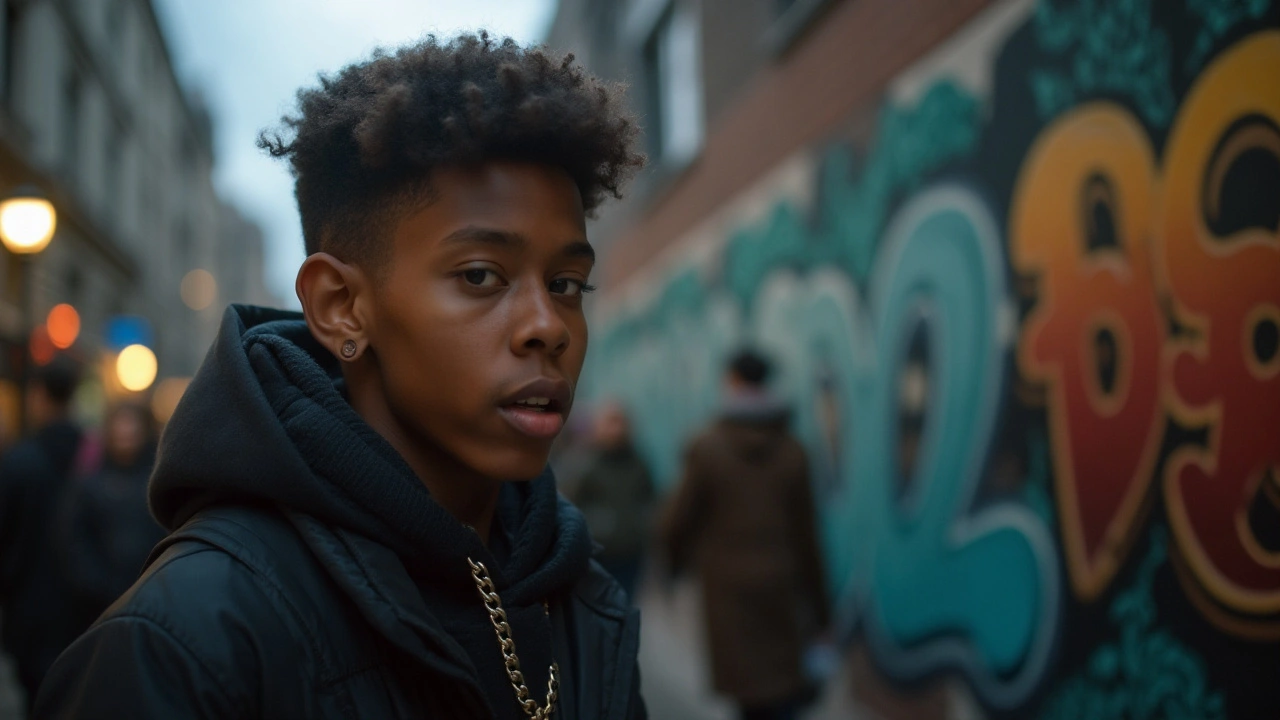
Impact on Society and Culture
The realm of hip hop has profoundly influenced society and cultures around the world, carving an unmistakable impact that resonates through various facets of life. What started as a form of art that drew on the struggle and resilience of marginalized communities has become a global phenomenon. This music genre serves as a powerful platform for expressing social and political commentary, championing issues such as racial equality, economic disparity, and urban life challenges. Over the years, hip hop artists have been at the forefront of advocating for change, using their lyrics to reflect the realities of their environments and evoke empathy and action among listeners. Their words often echo the societal challenges faced by many, promoting awareness and inspiring solidarity across diverse audiences.
On cultural landscapes, hip hop embodies a distinct blend of art forms, including deejaying, emceeing, graffiti art, and breakdancing, all of which have collectively reshaped the dynamics of self-expression and creativity. The genre has reinvented traditional norms, allowing for diverse narratives that celebrate individuality and communal identities alike. From fashion trends to slang, hip hop has deeply infused its lexicon and aesthetic into mainstream culture, influencing everything from the clothes people wear to the language they speak. Moreover, this genre has forged an intersection between different cultures, bringing varied backgrounds together to share and exchange experiences, thus fostering a richer multicultural dialogue.
Renowned academic Tricia Rose once said,
"Hip hop has always been a critique of society, a rebellion against the status quo. It provides a voice to those who have been historically neglected and offers them a platform to share their experiences with the world."Such insights underscore the enduring power of hip hop as not just a musical genre, but a cultural movement that empowers those who engage with it. It continues to push boundaries, redefine art forms, and challenge listeners to think critically about the world's complexities. This genre's ability to adapt and reflect modern societal changes suggests that its influence will persist as a dynamic force within culture.
The economic impact of hip hop should also not be underestimated. Over the decades, hip hop has evolved into a massive industry, generating billions of dollars in revenue. Its influence is seen in every corner of the entertainment sector, from music and film to advertising and technology. Aspiring artists find inspiration in the stories of successful hip hop moguls who have built empires from the ground up. This entrepreneurial spirit woven within the genre inspires many to pursue their passions and create opportunities for themselves, fostering an environment where creativity and enterprise thrive.
Iconic Hip Hop Voices and Stories
When we talk about hip hop, we are often drawn to the legends, the trailblazers whose voices reverberated through the airwaves and into the hearts and minds of listeners across the world. These iconic figures didn’t just create music; they told stories that painted vivid pictures of life in its raw and dynamic forms. Many of these artists hailed from neighborhoods rife with struggle, where ambition bubbled under the surface, yearning for expression. Characters like The Notorious B.I.G. and Tupac Shakur remain immortal through their artistry, narrating the gritty realities of street life alongside the human emotions of love, loss, and desire for success.
The raw lyricism of Notorious B.I.G. brought Brooklyn to life for those who had never set foot in the borough, with stories of survival conveyed through catchy hooks. His debut album, "Ready to Die," portrayed a graphic yet authentic depiction of an inner-city youth's journey. Meanwhile, Tupac captivated audiences with his ability to intertwine social issues within his music, powerfully addressing themes like racial inequality and violence through tracks such as "Changes" and "Keep Ya Head Up." He once said,
"I'm not saying I'm going to change the world, but I guarantee that I will spark the brain that will."
Another influential voice in hip hop is Lauryn Hill, whose album "The Miseducation of Lauryn Hill" broke barriers and provided a soulful, introspective take on black womanhood, motherhood, and self-identity. Her distinctive blend of hip hop, soul, and R&B set a new standard and resonated with diverse audiences worldwide. Her pioneering work was not just about music but was steeped in a message of empowerment and education. Through their groundbreaking contributions, these artists, among others, have shaped the culture of hip hop, turning it into a global phenomenon that speaks to the masses.
Modern-day voices like Kendrick Lamar and J. Cole continue this tradition, but with a fresh perspective, addressing today's pressing issues with the same intensity and honesty. Kendrick, for instance, uses his platform to tackle systemic problems and personal struggles with tracks like "Alright" and "HUMBLE." As a concept, hip hop has dynamically shifted from '80s boom-bap and '90s G-funk to new-age trap and experimental sounds while remaining grounded in its roots of storytelling and expression. These artists bridge generations, carrying the torch of authenticity as they contribute to the genre's ever-evolving narrative. Their stories aren't just entertaining; they serve as cultural artifacts that illuminate the human experience in its various forms.
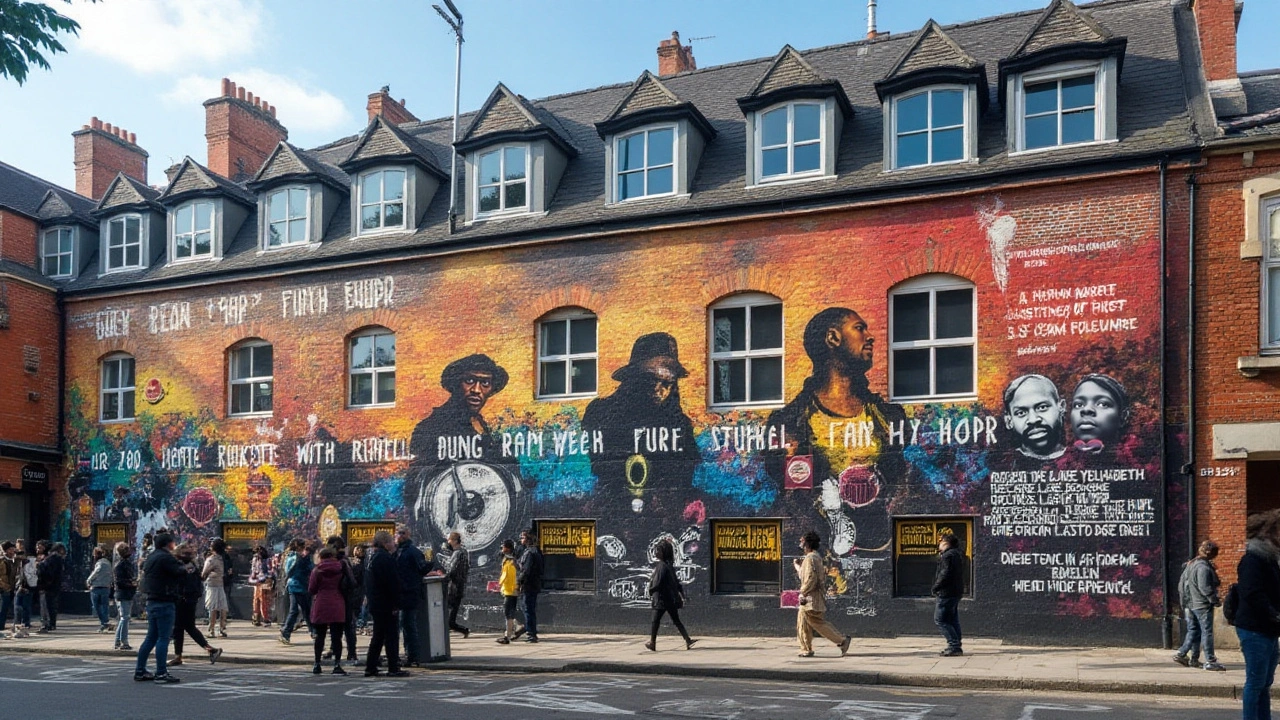
Future Trends in Hip Hop
As we peer into the future of hip hop, it's striking to envision just how much innovation and transformation this genre will likely undergo. The landscape of music is constantly shifting, and hip hop, known for its adaptability, is no exception. With technological advancements, particularly in AI and virtual reality, artists are now able to create more immersive experiences. We are starting to see concerts happening in virtual spaces, where performances feel as real as being in the front row but from the comfort of one's home. Such technologies are opening doors for emerging artists who might not yet have the resources for a world tour.
The cultural influence of hip hop also indicates its trends. The genre has consistently served as a mirror to society’s struggles and triumphs, and this characteristic will surely carry on. As social issues evolve, so will the content of hip hop, continuing to be a crucial voice in framing conversations. Artists are using their platforms to advocate for change, whether it’s about climate action, racial equality, or mental health awareness. As new problems emerge, music will continue reflecting these powerful narratives.
There’s a notable shift towards blending different genres, breaking traditional boundaries to create something fresh. Collaborations between hip hop artists and musicians from different styles—like rock, jazz, and electronic—are becoming more frequent. This not only enriches the artist’s reach but also delivers a unique auditory experience for listeners. It encourages an appreciation for diverse musical traditions and might well be the norm in future productions. Those cross-genre explorations keep the music evolving, making it vibrant and relevant.
Cultural diversity is influencing hip hop’s future trajectory, more than ever, artists from varied ethnic and linguistic backgrounds are entering the hip hop arena. This enriches the narratives shared through hip hop, making the genre an even more dynamic and heterogeneous movement. The rise of artists who rap in their native languages has also made hip hop a global phenomenon, connecting different regions through shared stories and rhythms.
"Hip hop is the pulse of the streets and will always adapt to the rhythm of society," said cultural analyst Marc Price in a recent interview. Such sentiments highlight the essence of adaptability that hip hop has continually embraced.
Monetization strategies within hip hop, primarily through streaming platforms and social media, will see further innovation. The direct-to-fan approach where artists release music independently is now amplified, providing a sustainable model which many are beginning to adopt. Fans are willing to spend more on experiences, thus platforms providing live interactions between artists and their audience could see increased prominence. With blockchain technology on the rise, concepts like NFTs are creating fresh avenues for revenue, where fans acquire exclusive digital content.
Here’s a quick statistic table to comprehend the changing trends:
| Year | Trend | Percentage Influence |
|---|---|---|
| 2025 | Virtual Concerts | 40% |
| 2025 | Cross-Genre Collaborations | 25% |
| 2025 | Direct-to-Fan Releases | 35% |

